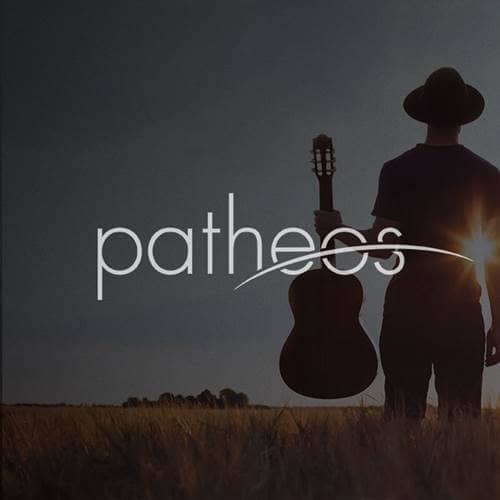- Trending:
- Pope Leo Xiv
- |
- Israel
- |
- Trump
- |
- Social Justice
- |
- Peace
- |
- Love

RELIGION LIBRARY
New Age
Sacred Time
The overarching view of time in the New Age movement envisions—in the words of the hit song from the 1967 musical Hair - the dawning of the Age of Aquarius, or more broadly the arrival of a new age. This concept of a dawning new age defines the entire movement’s understanding of time, with different subcultures within the New Age offering varying positions. Generally, New Agers subscribe to a view that the new age will bring peace, prosperity, and spiritual joy to the world.
The most common perspective on time in the New Age movement considers the current era -- generally understood as the mid-1960s to the present day -- as the point of transition between the closing Piscean Age and the opening Aquarian Age. This approach derives from a tradition in western astrology of dividing time into roughly 2,000-year segments named for the constellations of the zodiac. Ancient astronomers discovered that the sun’s position at the spring equinox gradually changed against the backdrop of the traditional constellations. Over the last two millennia, this equinox point has gradually moved from the constellation of Pisces to that of Aquarius. A complete cycle takes about 25,000 years. Astronomers call this cycle the “precession of the equinoxes,” and understand it as a natural effect of gravitational forces. Astrologers see it as much more important, and believe that the point’s shifts over the cycle reveal changing currents in the world’s history and cultures. For that reason, they divide the cycle into twelve eras, each named for the constellation that they believe dominates during that time period. Each age lasts slightly more than 2,000 years, though differences in measurement technique and slow changes in the cycle itself mean that most sources disagree on precise dates of each age.
The New Age incorporated astrology into its worldview, and subsequently New Agers have adopted the view that the precession of the equinoxes reveals a forthcoming transition in the earth’s history and cultures. With the end of the previous astrological era, the Piscean Age, and the arrival of the new one, that of the Aquarian Age, human civilization would witness a rebirth in spirituality that represented a newer, better age. New Agers believe that the Piscean Age has been characterized by darkness, hierarchy, conflict, and rigid religious and scientific structures. By contrast, New Age practitioners describe the dawning Aquarian Age as filled with peace, harmony, love, and holism. They ascribe such attributes to an array of factors ranging from subtle energies, vibratory levels, and cosmic influences.
Scholars note that this sacred narrative belongs to a pattern of thought called millennialism. Millennialism teaches that the current era of the earth will soon end, and that a new era will replace it. Some millennialists envision a series of catastrophic events that will coincide with this transition, a belief most present in contemporary culture among evangelical and fundamentalist Protestants who look to the Christian Book of Revelation as a guide to the end of the world. New Agers tend to avoid such catastrophic visions of the end, though exceptions do exist. Rather, New Age practitioners tend to view the coming of the Age of Aquarius as a slow natural transition during which the old order will pass away as a new order replaces it. Though many factors contribute to this belief, the New Age position that the Aquarian Age represents peace and harmony clearly limits any tendencies toward envisioning its arrival as marked by violence or disorder.
Different groups and individuals within the New Age have identified various moments as the inauguration of the New Age. Some proponents of particular schools of New Age practice look to their origins as the dawning of the New Age, whereas others understand the general awakening to New Age concepts during the 1960s or 1970s as a possible beginning of the Age of Aquarius. However, no single declaration as to the precise start of the Aquarian Age holds general acceptance among New Age practitioners.
Historically speaking, the Harmonic Convergence gatherings of August 16-17, 1987 represented the first wide-scale recognition of a possible inauguration of the New Age. Mexican artist and amateur historian Jose Arguelles promoted these dates, after determining them through his study of the Mayan calendar system. Arguelles and other New Agers looked to the harmonic convergence as the precise moment wherein cosmic and earthly energies aligned, and believed that this would result in the dawning of the new era. Arguelles specifically asked New Age practitioners to gather together to celebrate the new era’s arrival, and many hoped to use their combined spiritual awareness to spread positive energy throughout the world and encourage a wider awareness of their beliefs. Interestingly, the Harmonic Convergence also represented one of the first large public gatherings of New Age practitioners, with thousands of such believers gathering at such New Age sacred sites as Mt. Shasta and Golden Gate Park (California), Sedona (Arizona), and Stonehenge (England).
A current strain of New Age thought looks to 2012 as another possible date for the inauguration of the new age. This approach similarly looks to the Mayan calendar as a basis, noting that the calendar ends and restarts during that year. Like the astrological approach of the Age of Aquarius, this New Age Mayan perspective views a new beginning in the timekeeping system as indicating a looming spiritual transformation destined to usher in broader social and historical developments. While some New Agers envision cataclysmic apocalypse in 2012, most follow New Age author Daniel Pinchback, who popularized the date in his 2012: The Return of Quetzalcoatl. Pinchback, in keeping with the wider New Age understanding of sacred times, writes that 2012 will represent an expansion of global consciousness and psychic energy that will positively transform the world.
Study Questions:
1. Why is there a focus on a “New Age” within the New Age movement?
2. What is the Aquarian Age? How does it differ from the Piscean Age?
3. What was the Harmonic Convergence? Why was it significant?










